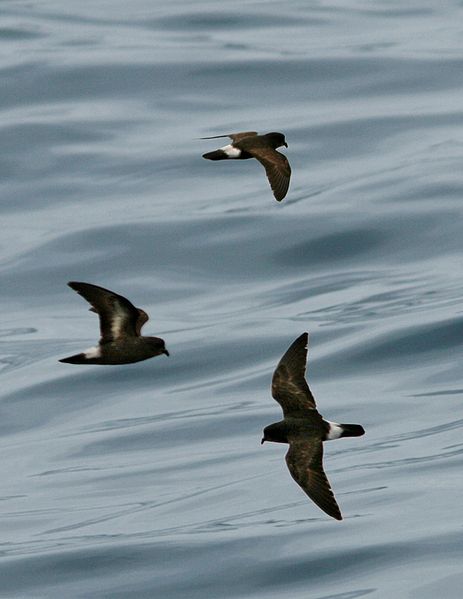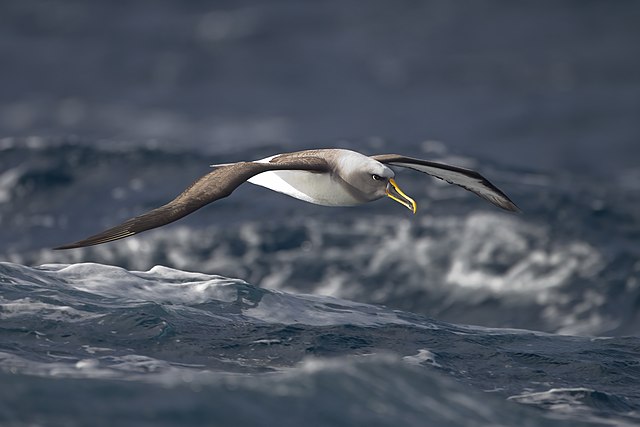Northern storm petrels are seabirds in the genus Hydrobates in the family Hydrobatidae, part of the order Procellariiformes. The family was once lumped with the similar austral storm petrels in the combined storm petrels, but have been split, as they were not closely related. These smallest of seabirds feed on planktonic crustaceans and small fish picked from the surface, typically while hovering. Their flight is fluttering and sometimes bat-like.
Northern storm petrel
Unusually for the Hydrobatidae, the fork-tailed storm petrel has an all-grey plumage.
The chick of a fork-tailed storm petrel
The decline of the ashy storm petrel has led to it being declared an endangered species by the IUCN.
Procellariiformes is an order of seabirds that comprises four families: the albatrosses, the petrels and shearwaters, and two families of storm petrels. Formerly called Tubinares and still called tubenoses in English, procellariiforms are often referred to collectively as the petrels, a term that has been applied to all members of the order, or more commonly all the families except the albatrosses. They are almost exclusively pelagic, and have a cosmopolitan distribution across the world's oceans, with the highest diversity being around New Zealand.
Procellariiformes
Pterodroma macroptera from Godman's Monograph of the Petrels, 1907–1910
The southern royal albatross is one of the largest of the Procellariiformes.
The white-faced storm petrel moves across the water's surface in a series of bounding leaps.








